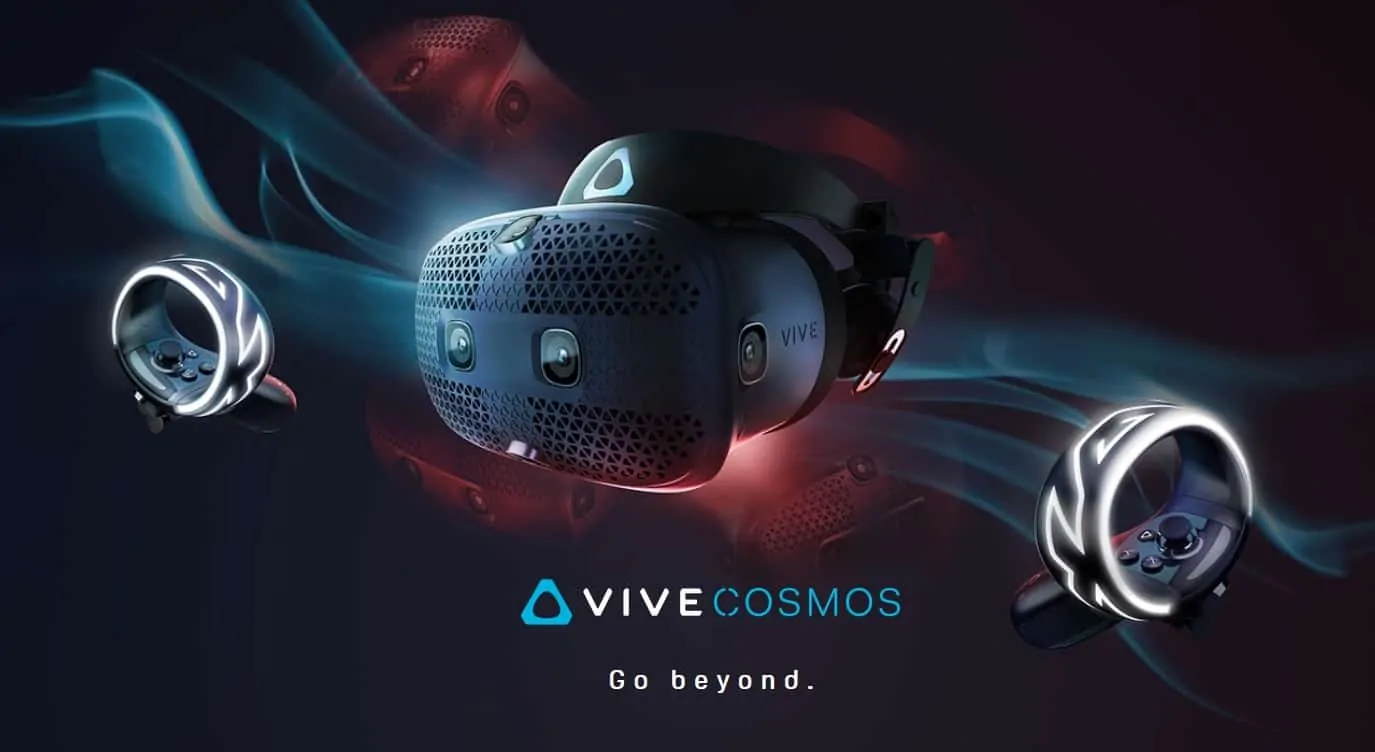Next-generation VR headsets have begun to debut, starting with the recently released Oculus Rift S and Oculus Quest. While HTC already released the Vive Pro, an updated headset with better visuals and ergonomics, that headset was geared more toward enterprise-grade solutions. HTC is looking to update its more consumer-focused headset with the PC-powered Vive Cosmos, and it’s upgrading everything you could possibly think of along the way.
HTC showed off the Vive Cosmos at CES this year but was pretty light on details. 6 months later and they’re finally ready to unveil the final headset design and features. First up is the new display, which features LCD panels with an incredible 2880×1700 combined resolution between each eye’s panel. That’s an 88% increase in resolution over the original Vive, and an extra 100 vertical pixels over the Vive Pro.
These panels also feature an RGB stripe pixel configuration with increased subpixels, offering significant clarity improvements over the original Vive. That means the Cosmos offers the highest resolution displays among major VR headsets, besting the Oculus Rift S’s 2560×1440 combined resolution. It also offers a 10Hz higher refresh rate than the Rift S too, sporting the same 90Hz as the original Vive versus the 80Hz on the Rift S.
While there’s no eye-tracking on the Cosmos as there is with the Vive Pro Eye, it’s got full inside-out tracking, which means the unit can track room-scale movements in VR space without having to rely on externally mounted cameras or base stations. This is achieved via a series of 6 cameras, located around the headset, and is an improvement over the 4 cameras the device was originally teased to have.
This sort of next-generation tracking increases VR immersion significantly, as you won’t need to setup additional hardware to get going. On the subject of increasing immersion, the Vive Cosmos features a vented front design that keeps lenses from fogging and faces from sweating as much. If you’ve ever used a VR HMD you’ll know how annoying fogged lenses can be and how pervasive they can be, no matter the climate.
Mix this with compatibility with the existing Vive Wireless Adapter and you’ve got full immersion without wires. It also features a new more ergonomic design over the original Vive, including a flip-up design that allows users to step out of the VR world like a pair of sunglasses by flipping the face plate up.
That new face plate design is also modular, and while HTC is still a bit shy in regards to planned functionality for this modular design, it says this is designed to meet “different XR needs in the future.” That seems to be a clear pointer to allowing the Vive Cosmos to be run from more than just a PC, as it’s very likely HTC is planning on using this design for more than just a single-purpose use.
While we now know all the new features and details for the headset itself, there are still no details surrounding its release or price. Many are hopeful that this will come in less than the Vive Pro, which currently sells for $799 for the HMD alone and is well over $1,000 for the controller + tracking package. Given the high price of the Valve Index and the relatively low price of the Oculus Rift S, it’s difficult to say what kind of impact the Cosmos will make when it lands later this year.


